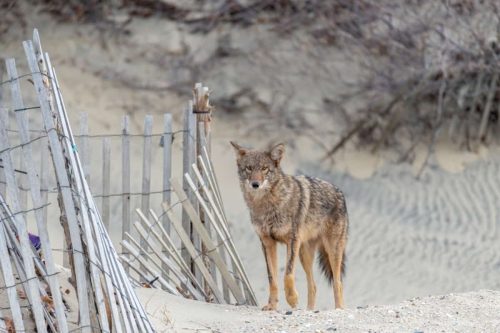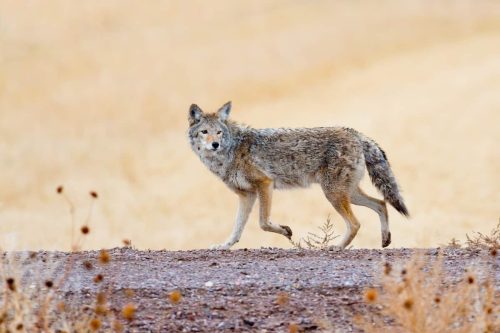Can Coyotes Swim? The Truth About Coyotes And Swimming
Coyotes are highly adaptable creatures found across North and Central America. They are part of the canine family and are known for their adaptability and ability to thrive in urban and rural environments.
Coyotes can survive in various habitats ranging from deserts to forests. But one of the most exciting questions about them is: can coyotes swim? If so, what can they do in the water? This blog post will cover the aquatic abilities of coyotes and provide a definitive answer to the question of whether or not they can swim.
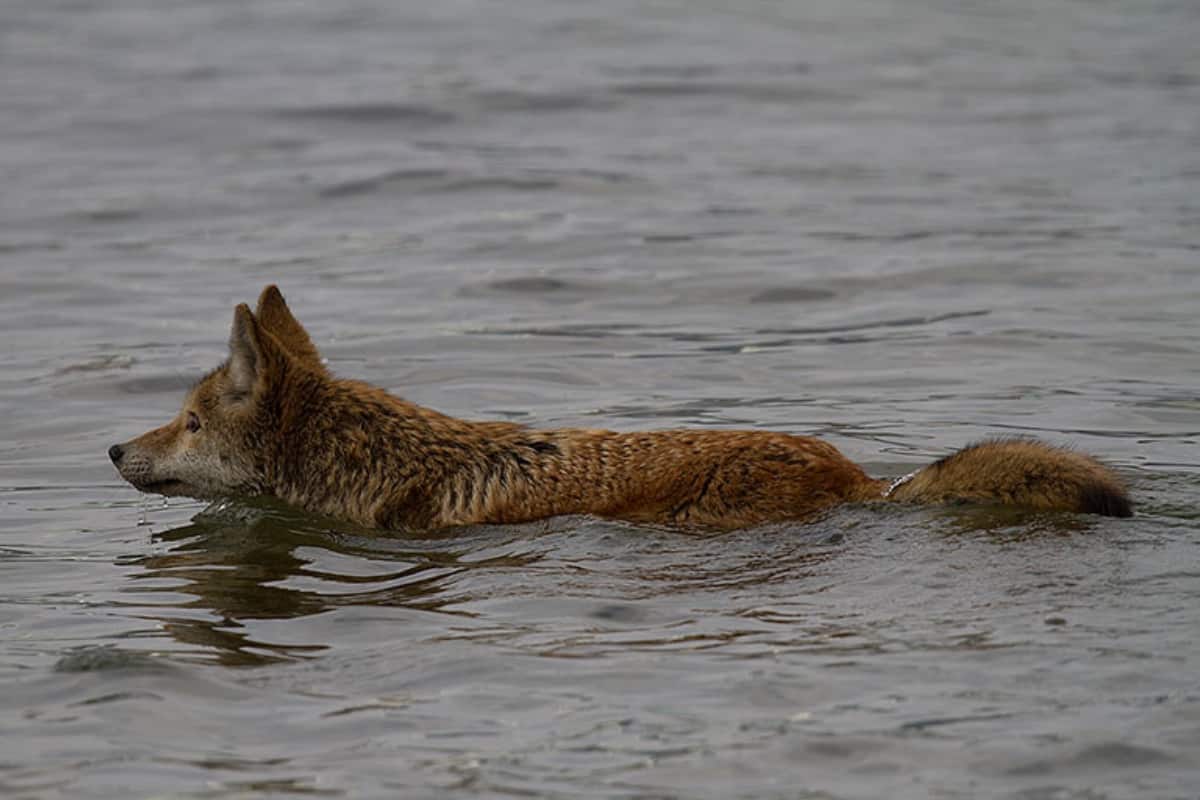
Contents
All You Need to Know About: Can Coyotes Swim?
As we know that defining various particular traits of any wild animal is not as easy as it sounds. We have to cover various aspects of their natural habitat and adaptive abilities. The same is true when we come to the query do coyotes swim? We would answer this question by addressing all aspects of a coyote’s life. Let us start with how far they can swim.
How Far Can Coyotes Swim?
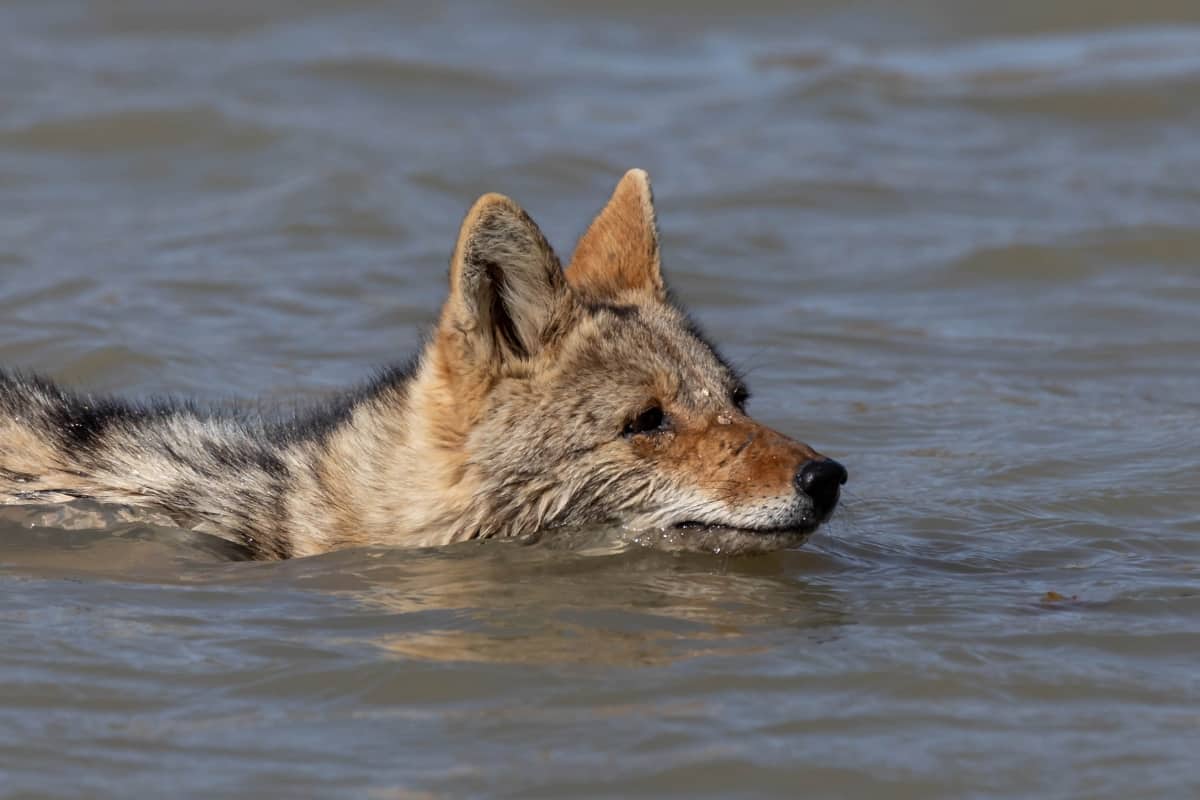
The question of how far coyotes can swim is one that many people are curious about. The answer is that they are excellent swimmers and are capable of swimming at least 0.8 km (0.5 mi).
It is not uncommon to see coyotes near water, such as streams, rivers, or lakes. In fact, during late summer, young coyotes are often sighted moving along the edges of towns and hamlets in the Adirondacks.
While coyotes can swim long distances, they typically do not swim for pleasure or recreation. Instead, they may swim across bodies of water to find new food sources or to reach areas with fewer predators.
Why Do Coyotes Swim?
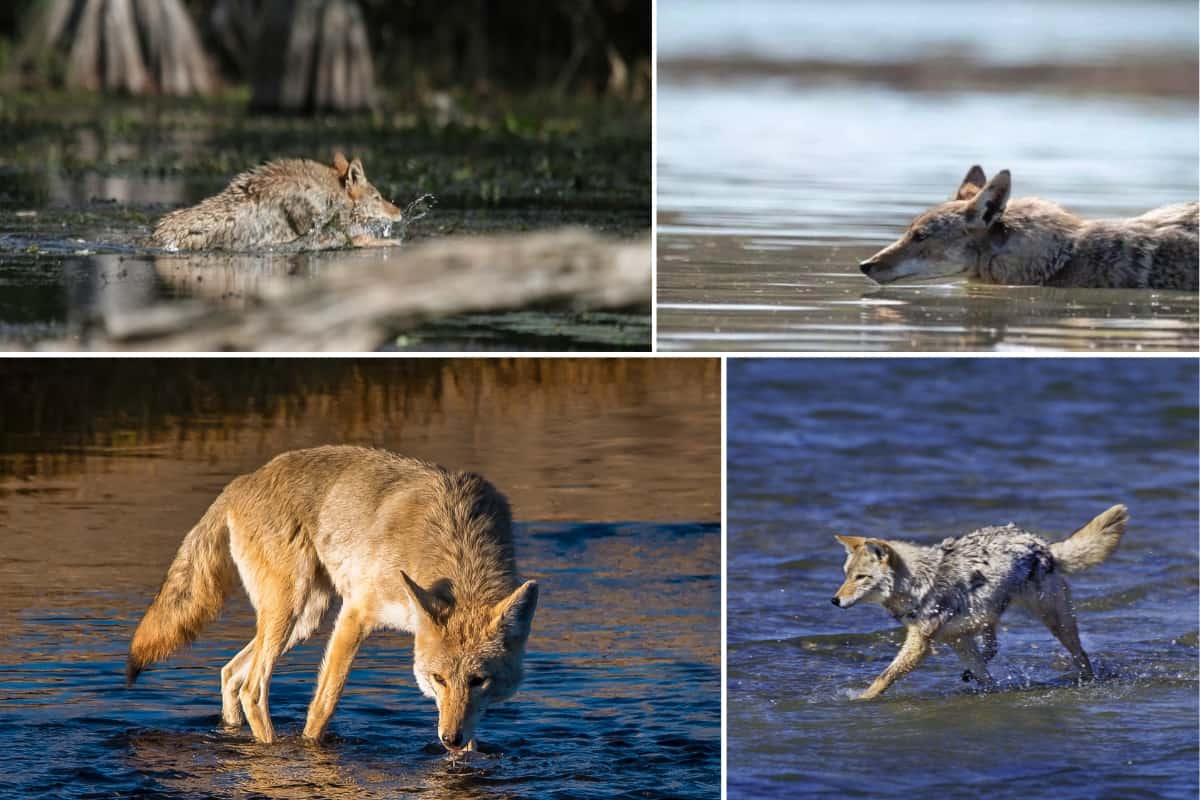
While some may question why they choose to swim in the first place, there are a few reasons why they may take to the water. It is the most exciting part of answering the question, can coyotes swim?
Quest for Food
One reason why coyotes may swim is in search of food. Coyotes are opportunistic feeders who hunt or scavenge for food wherever they can. They may swim to islands or areas where they know prey is abundant, such as waterfowl, fish, or small rodents.
Can coyotes climb trees in search of food? Find out here!
Escape from Predators
Another reason why coyotes may swim is to escape from predators. They have many natural predators, including wolves, mountain lions, and bears. They may swim across a river or stream to escape their predators if they sense danger.
In Search of New Habitat:
Finally, coyotes may also swim in search of new habitats. As their populations expand, they may need to find new areas to live and breed. If no suitable habitats are nearby, they may swim across bodies of water to find new areas to call home.
Are Coyotes Good at Swimming?
Coyotes are efficient swimmers, even though they aren’t as aquatic as beavers or muskrats. They can swim across small lakes and rivers and cover a considerable distance when they have to. However, they’re less adept at swimming than their larger relatives, wolves, and their cousins, the foxes.
Coyotes have developed a unique way of swimming:
- Holding their heads above the waterline.
- Paddling with their front paws.
- Using their tail as a rudder to steer.
This helps them keep their balance and prevents them from sinking underwater. While they might not win any medals in the Olympics, coyotes are surprisingly agile in the water.
Their excellent swimming abilities also come in handy when they hunt water-loving prey like muskrats, beavers, and ducks. In the wild, they can swim up to a mile to hunt for food or to escape predators.
Coyotes are good swimmers but are not natural water babies like otters or seals. They have learned to adapt to their environment and use swimming to survive.
Do you know: Do coyotes hibernate or migrate?
Are Coyotes Scared of Water?
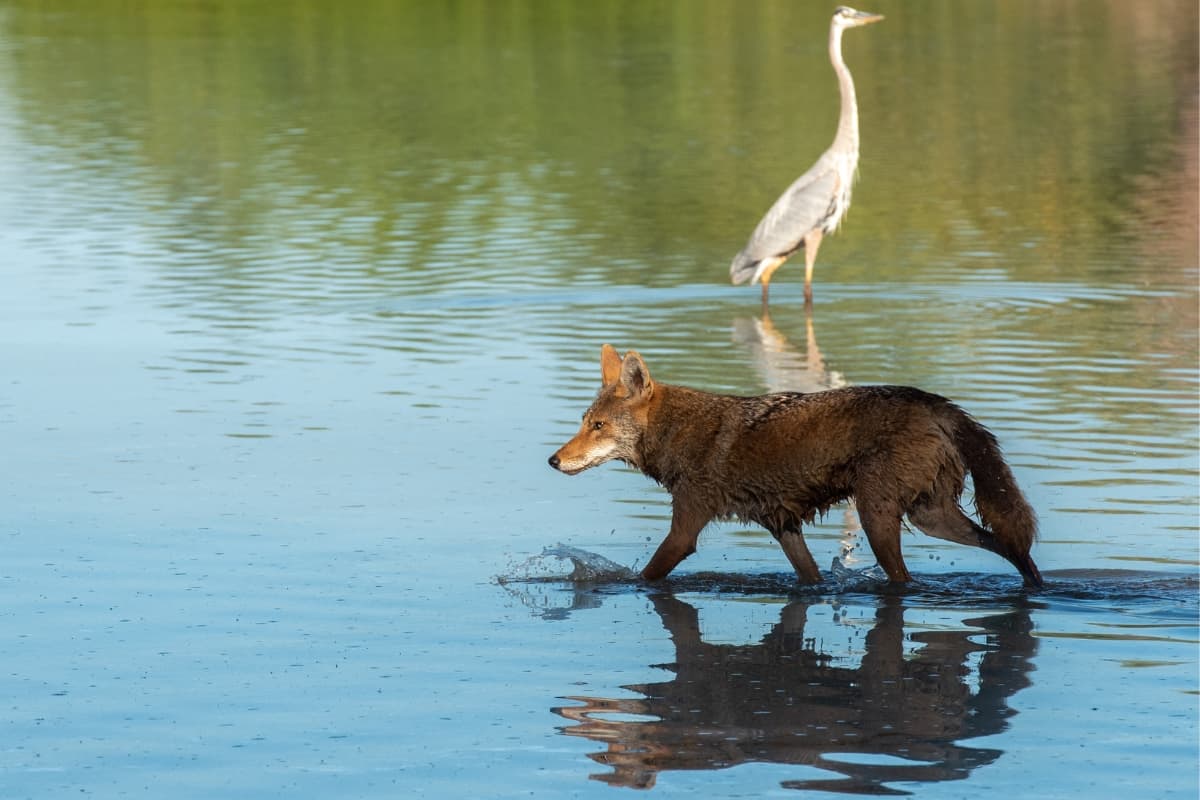
Contrary to popular belief, coyotes are not scared of water. They are known to swim in search of food or in pursuit of prey, as mentioned previously. Coyotes have been spotted swimming for long distances across rivers and lakes. However, they are still excellent swimmers.
While they can swim, coyotes are not built for water travel. Their slender frames and tiny legs are not suitable for long-distance swimming. Moreover, their coats get waterlogged, making it difficult for them to move quickly in the water. It is also important to note that coyotes may avoid swimming in water bodies that are deep or have strong currents.
Will Coyotes Avoid Crossing A Stream Or A River?
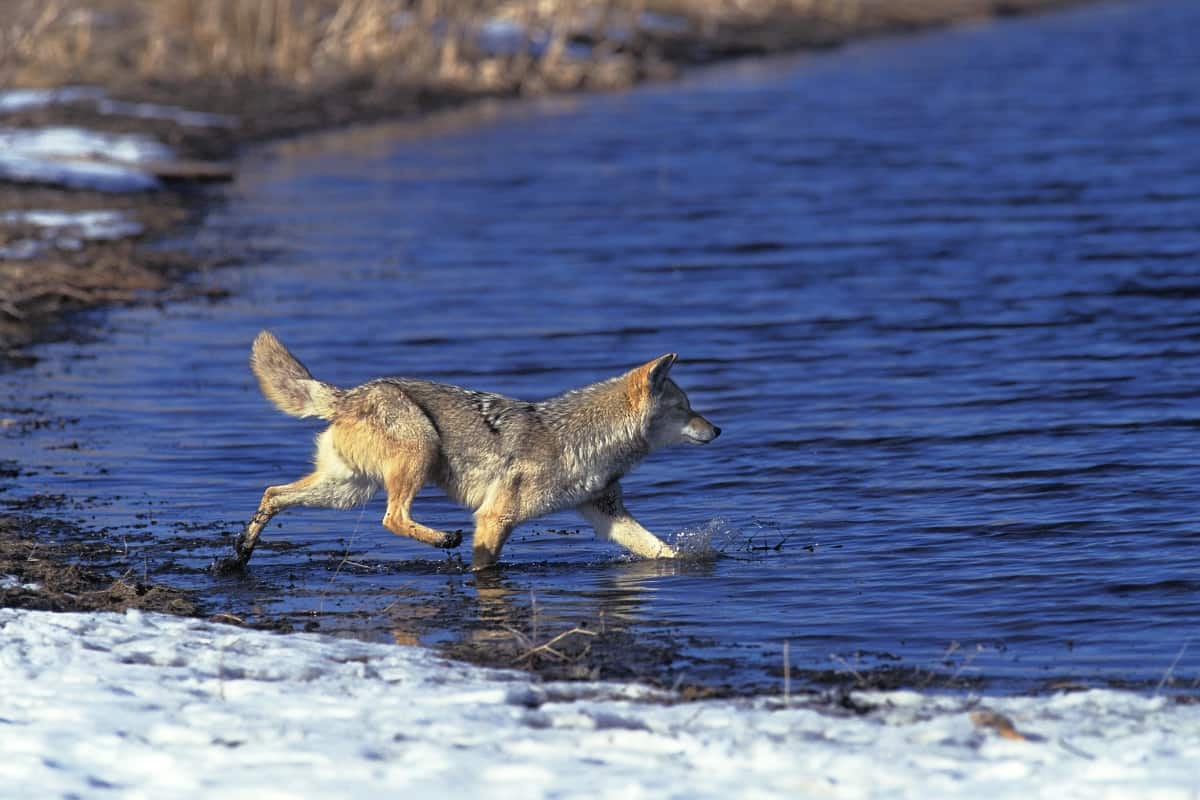
Coyotes are adaptive animals that can survive in various environments, from forests and mountains to deserts and urban areas. As a result, it’s not uncommon for coyotes to come across streams or rivers during their hunting or travel routes. So, do they avoid crossing these water bodies or take the plunge and swim across them?
Coyotes generally don’t have an innate fear of water and can swim if necessary. However, whether they will swim across a stream or river depends on several factors, including the depth and flow of the water, the distance to the other side, and the availability of alternative routes.
Coyotes may walk across the stream or river instead of swimming if the water is shallow and calm. However, if the water is deep and fast-flowing, they may swim to reach their destination. In such cases, coyotes may use their tails as a rudder to steer themselves or paddle with their front legs while using their back legs to balance and maintain buoyancy.
Overall, while coyotes are not natural swimmers, they can swim when needed and cross streams and rivers if it’s the most viable option.
FAQs
Final Thoughts
Coyotes do have the ability to swim if necessary. While they may not be the most proficient swimmers, they can cross bodies of water to search for prey or escape predators. It is important to remember that while coyotes can swim, they still face many risks in aquatic environments, such as currents, deep water, and exposure to potential threats such as alligators. Coyotes’ aquatic abilities are just one example of their impressive adaptability and survival skills in the wild.

Ray is an experienced wildlife researcher with a background in veterinary medicine. His contributions have significantly advanced our understanding of various wild animals.


